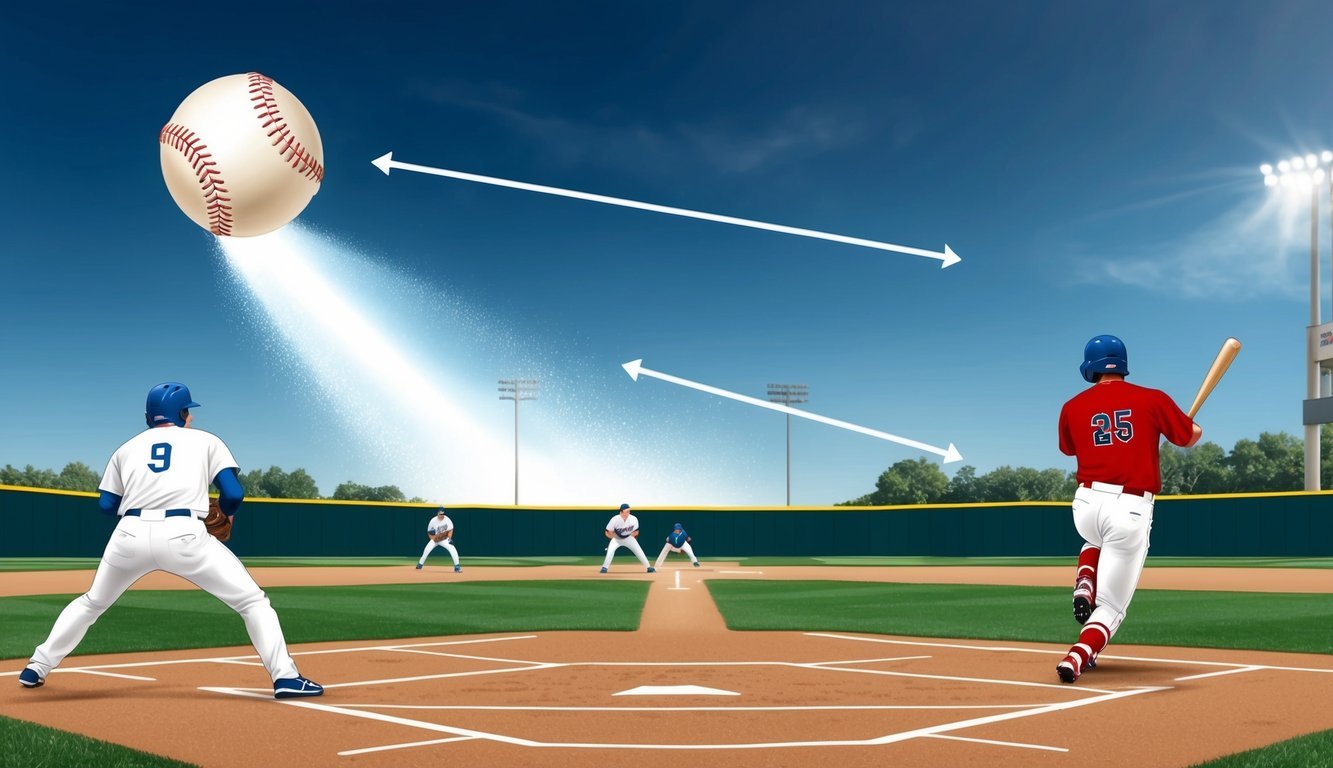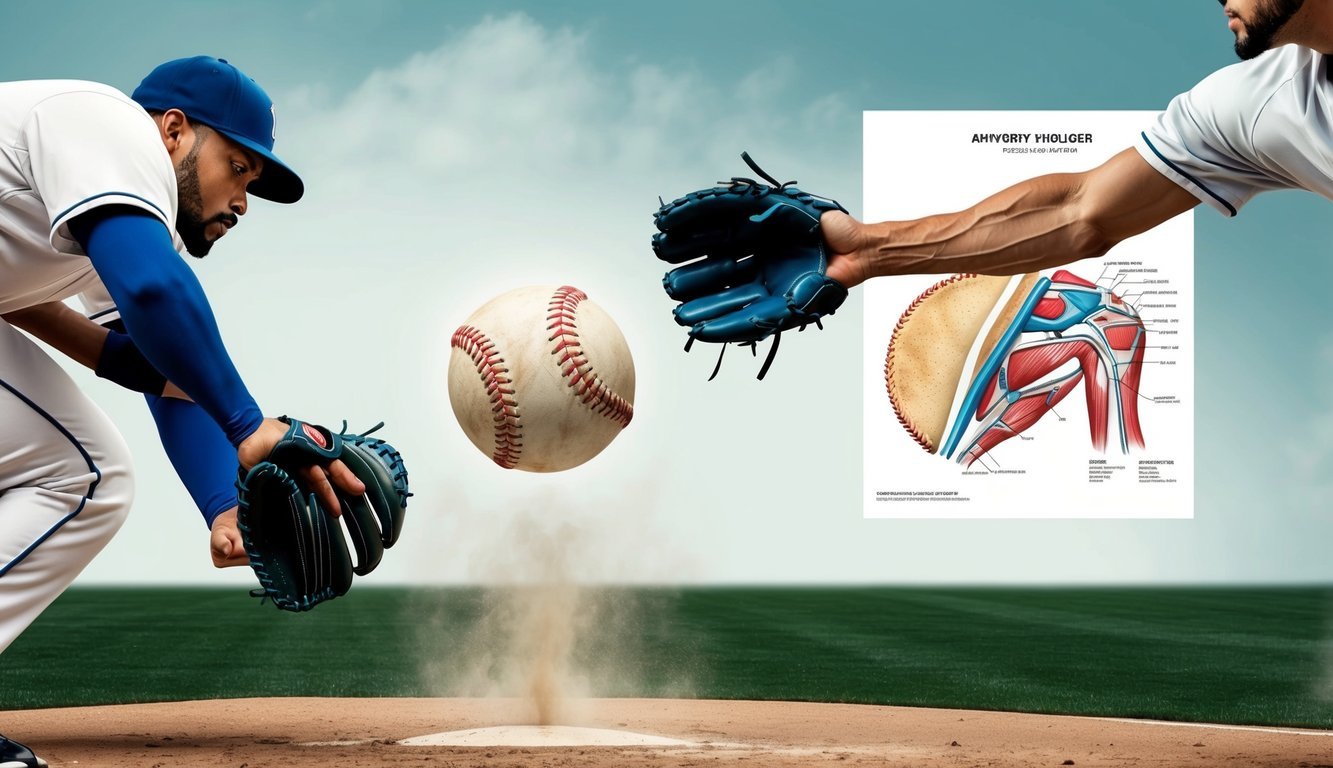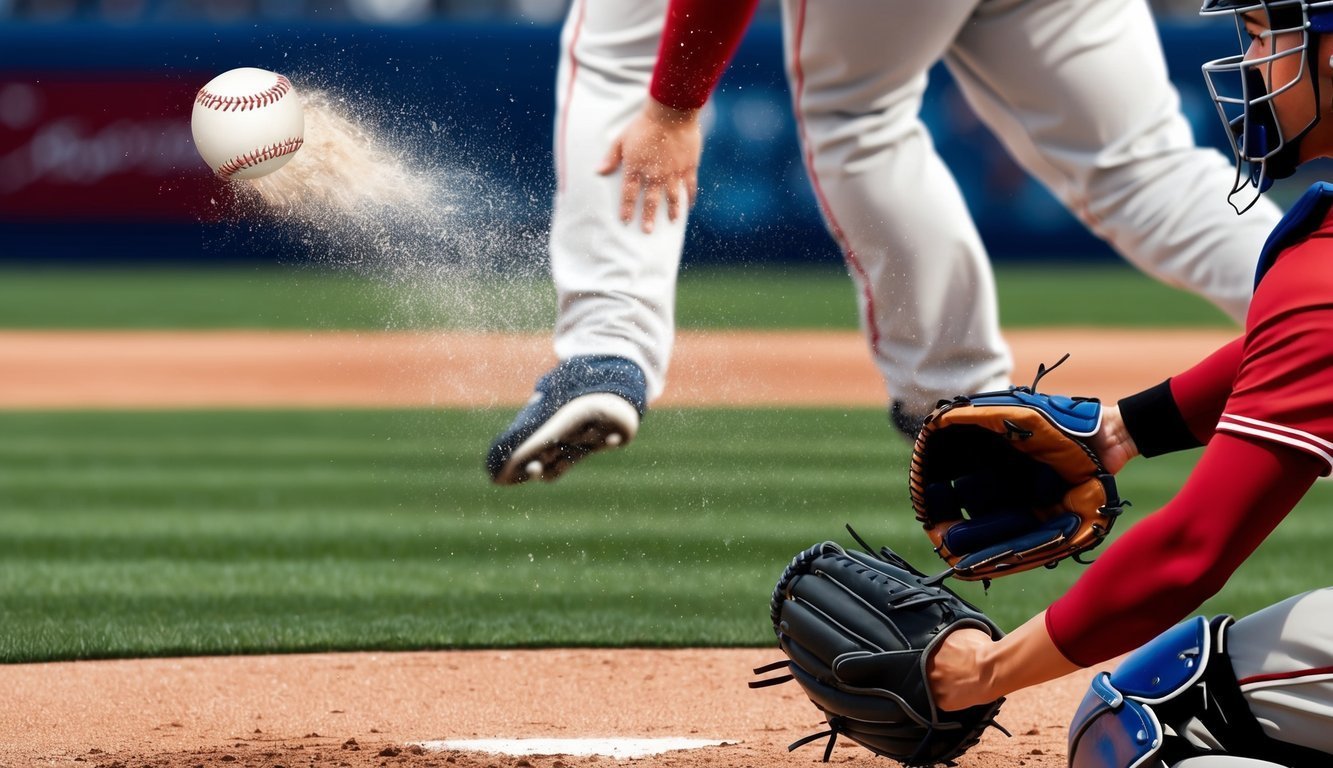Baseball pitching is a fascinating blend of art and science.
Physicists, biomechanists, and sports scientists have extensively studied the precise movements and techniques used by pitchers.
Understanding the science behind pitching can help players improve their performance, reduce injury risk, and unlock their full potential on the mound.
Pitching involves complex biomechanics, with every phase of the motion contributing to the ball’s final velocity and trajectory.
From the wind-up to the follow-through, pitchers harness gravitational forces, rotational energy, and muscular power to deliver the ball with maximum efficiency.
The body’s positioning, weight transfer, and timing all play crucial roles in generating speed and accuracy.
Newton’s laws of motion are at work throughout the pitching process.
As the pitcher pushes off the mound, they create an equal and opposite reaction that propels them forward.
The spin imparted on the ball affects its path through the air, allowing pitchers to throw curveballs, sliders, and other breaking pitches that confound batters.
By mastering these scientific principles, pitchers can elevate their game and keep hitters guessing.
The Fundamentals of Pitching
Mastering the art of pitching requires a deep understanding of mechanics, motion, and the body’s biomechanics.
Pitchers must harness their physical abilities and technical skills to deliver powerful, accurate throws.
Understanding Pitching Mechanics
Pitching mechanics form the foundation of a successful throw.
The pitcher’s grip on the ball is crucial, affecting both control and movement.
Proper stance and balance set the stage for an effective pitch.
Arm position and elbow height impact velocity and accuracy.
Pitchers focus on maintaining a consistent release point to improve their command.
Good mechanics also help prevent injuries by distributing stress evenly across the body.
Footwork plays a vital role in generating power.
Pitchers push off the rubber, transferring energy from their legs through their core and into their throwing arm.
Pitching Motion Breakdown
The pitching motion consists of several distinct phases.
It begins with the wind-up, where the pitcher gathers momentum.
Next comes the stride phase, as the pitcher steps toward home plate.
During the arm cocking phase, the pitcher’s shoulder rotates externally, storing potential energy.
The acceleration phase follows, with the arm whipping forward at high speed.
Finally, the follow-through completes the motion, helping to decelerate the arm safely.
Each phase flows smoothly into the next, creating a fluid, powerful movement.
Hip rotation is key throughout the entire process, driving the kinetic chain and boosting pitch velocity.
The Role of Biomechanics
Biomechanics helps pitchers optimize their form and reduce injury risk.
It focuses on how different body parts work together during the pitching motion.
The kinetic chain concept is central to pitching biomechanics.
Energy transfers from the ground up through the legs, core, and arm.
Efficient energy transfer results in faster pitches and less strain on the arm.
External rotation of the shoulder is crucial for generating power.
However, excessive rotation can lead to injuries.
Pitchers work to find the right balance between performance and safety.
Biomechanical analysis helps coaches identify areas for improvement in a pitcher’s form.
This can lead to tweaks in technique that boost performance and extend careers.
Physical Aspects of Pitching
Pitching in baseball involves complex physical mechanics that combine power, precision, and technique.
The body’s movements work in harmony to generate force and accuracy, while maintaining arm health.
Building Velocity
Velocity starts from the ground up.
Pitchers use their legs to drive off the mound, creating a strong foundation.
Core strength is crucial for transferring energy from the lower body to the upper body.
Proper hip rotation and trunk flexion maximize power output.
Fast-twitch muscle fibers in the legs and core contribute significantly to throwing speed.
Arm speed is the final piece of the velocity puzzle.
Pitchers work on quick arm action and wrist snap to boost pitch speed.
Strength training for the shoulder and forearm muscles helps increase throwing power.
Momentum and Body Movement
A pitcher’s momentum begins with the wind-up.
The initial body turn and leg lift create potential energy.
As the pitcher moves towards home plate, kinetic energy builds.
The stride length affects momentum.
Longer strides generally produce more power, but control can suffer.
Pitchers find their optimal stride length through practice.
Trunk rotation is key for generating torque.
The hips lead the upper body, creating a whip-like effect.
This sequence of movements transfers energy efficiently from the legs to the pitching arm.
Arm and Shoulder Health
Proper mechanics are vital for arm health.
The shoulder and elbow experience extreme forces during pitching.
Correct arm path reduces stress on these joints.
Pitchers focus on strengthening the rotator cuff muscles.
These small muscles stabilize the shoulder during throwing motions.
Regular stretching helps maintain flexibility and prevent injuries.
Rest between outings is crucial.
Overuse is a leading cause of arm problems in pitchers.
Coaches and trainers carefully monitor pitch counts and innings to protect young arms.
Proper follow-through completes the pitching motion.
It helps decelerate the arm safely, reducing strain on the shoulder and elbow.
Pitching Techniques and Strategies

Effective pitching combines physical skill, mental strategy, and a deep understanding of baseball physics.
Pitchers must master various pitch types, select the right pitches for each situation, and employ advanced tactics to keep batters off balance.
Pitch Types and Their Mechanics
Fastballs form the foundation of most pitchers’ arsenals.
The four-seam fastball travels straight with backspin, while the two-seam fastball has slight lateral movement.
Curveballs use topspin to create a sharp downward break.
Sliders combine side spin and backspin for a diagonal break.
Changeups deceive batters by mimicking fastball arm speed but traveling slower.
The splitter drops sharply as it approaches the plate.
Cutters move slightly away from the pitcher’s throwing hand side.
Each pitch type requires specific grip and release techniques.
Pitchers must practice extensively to perfect the mechanics and achieve consistent movement and control.
Pitch Selection and Batter Strategies
Smart pitch selection involves considering the count, batter tendencies, and game situation.
Early in the count, pitchers often establish their fastball.
With two strikes, they may opt for their best “out” pitch.
Against power hitters, pitchers might work the edges of the strike zone.
For contact hitters, they may induce weak contact with off-speed pitches.
Changing eye levels and mixing speeds keeps batters guessing.
Pitchers study scouting reports to identify batters’ weaknesses.
They might exploit a hitter’s struggles with inside pitches or tendency to chase low breaking balls.
Advanced Pitching Tactics
Tunneling is a technique where pitches start on the same trajectory before breaking in different directions.
This makes it harder for batters to distinguish pitch types early.
Sequencing involves strategically ordering pitches to set up batters.
A high fastball followed by a low breaking ball can be effective.
Pitchers may also use patterns to establish expectations before breaking them.
Some pitchers employ subtle variations in their delivery to disrupt timing.
Quick pitches or hesitation moves can throw off a batter’s rhythm.
Altering arm angles slightly can change the perceived trajectory of pitches.
Understanding the physics of ball flight helps pitchers manipulate seam orientation and release points to achieve desired movement.
They can use the Magnus effect to create more pronounced breaks on their pitches.
Injuries Related to Pitching

Baseball pitchers face unique physical challenges that can lead to various injuries.
Understanding these risks and how to address them is crucial for player health and performance.
Proper conditioning and strengthening exercises can help mitigate the risk of injuries, allowing pitchers to maintain their performance throughout the season.
Additionally, coaches and trainers should prioritize injury prevention strategies, such as monitoring workload and ensuring adequate recovery time.
While baseball pitchers must be aware of their unique challenges, a comprehensive understanding of all player positions, including a center fielder defensive skills overview, can further enhance overall team performance.
Common Pitching Injuries
Shoulder and elbow injuries are the most frequent issues for pitchers.
The rotator cuff, a group of muscles and tendons in the shoulder, often experiences strain or tears.
Labral tears can also occur in the shoulder joint.
In the elbow, ulnar collateral ligament (UCL) injuries are particularly concerning.
UCL damage can require Tommy John surgery, named after the first pitcher to undergo the procedure.
Other common problems include:
- Tendinitis in the shoulder or elbow
- Muscle strains in the forearm or biceps
- Nerve compression syndromes
These injuries typically result from the repetitive, high-stress motions involved in pitching.
Prevention and Rehabilitation
Proper pitching mechanics are key to injury prevention.
Coaches and trainers focus on:
- Correct arm angles and follow-through
- Balanced lower body movement
- Core strength and stability
Pitch count limits and adequate rest between outings help reduce overuse injuries.
Strength training programs target the rotator cuff, shoulder blade muscles, and core.
For injured pitchers, rehabilitation often involves:
- Rest and anti-inflammatory treatments
- Gradual strengthening exercises
- Sport-specific drills to rebuild pitching form
Physical therapy and sports medicine specialists play crucial roles in recovery.
They use techniques like ultrasound, massage, and targeted exercises to promote healing and restore function.
Scientific Analysis and Technology in Pitching

Baseball pitching has become a fascinating field of study, blending physics principles with cutting-edge technology to enhance performance and reduce injury risks.
Scientists and coaches now have powerful tools to dissect every aspect of a pitcher’s motion.
Role of Physics in Pitching
The physics of pitching is a complex interplay of forces and motion.
Spin rate affects the ball’s trajectory through the air, creating lift and movement.
A fastball’s backspin generates lift, while a curveball’s topspin causes it to drop.
Internal rotation of the shoulder is crucial for velocity.
The glenohumeral joint acts as a pivot point, allowing the arm to whip forward at high speeds.
Pelvis rotation initiates the kinetic chain, transferring energy from the lower body to the arm.
Stride length impacts both velocity and control.
A longer stride can increase pitch speed but may reduce accuracy if not properly coordinated with arm timing.
Technological Advances and Analysis
High-speed cameras and motion capture systems have revolutionized pitching analysis.
These tools track minute details of arm slot, release point, and body positioning throughout the delivery.
Biomechanical labs use marker-based systems to create 3D models of pitchers’ movements.
This data helps identify inefficiencies and potential injury risks in the pitching motion.
Pitching machines have evolved to replicate specific pitch types and release points.
This allows batters to practice against a variety of “virtual pitchers.”
Wearable sensors now provide real-time feedback on arm stress and fatigue levels during games and practice sessions.
This technology helps coaches make informed decisions about pitcher workload and recovery.
